If you don’t have time to go through this article, then whether the 28mm or the 35mm lens is better boils down to your shooting style:
- For street photography, when comparing the 35mm vs 28mm focal lengths, the 28mm is the better choice.
- For portraits, the 35mm lens comes out on top.
- For landscape photography, the 28mm lens works better on a full-frame camera, while the 35mm lens works better on a crop sensor camera.
Picking between lenses with similar focal lengths can be a daunting task. This is especially true if you don’t have a reference for what each lens does.
Having to choose between 28mm or 35mm is quite a tough decision, and a decision that always comes with a compromise. There is no right or wrong choice here, just a choice that is going to work for you, because if a lens could do everything, there wouldn’t be a need for other lenses!
In this article, we’ll take a look at a direct comparison between 28mm vs 35mm focal lengths on both full frame and crop sensor cameras, so you can see the fields of view in practice, and understand which focal length will work best for you.
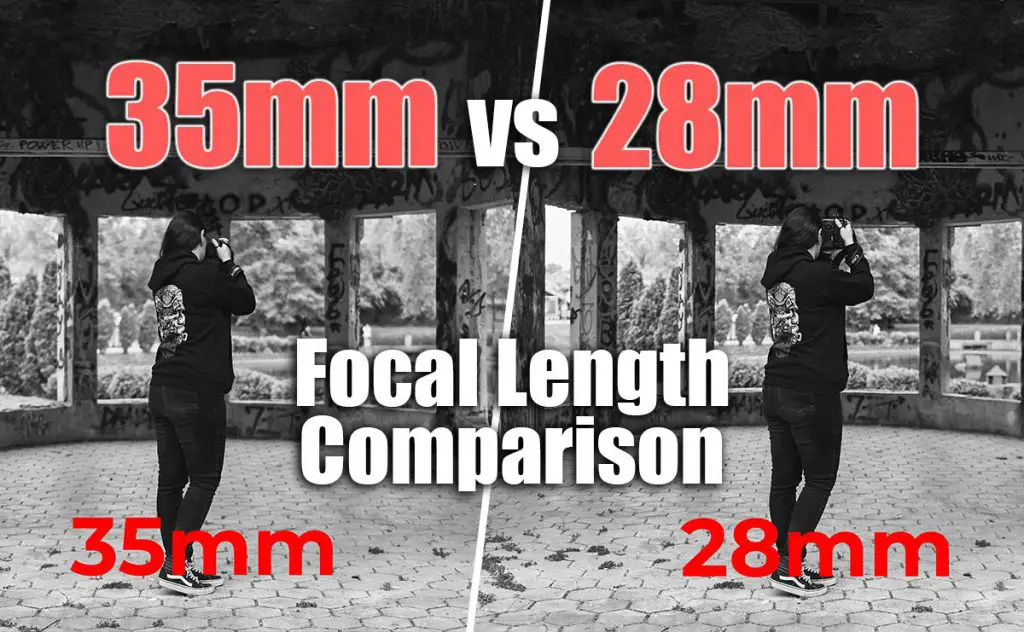
When is the 28mm a good choice?
The 28mm is the wider choice in this comparison of 35mm vs 28mm. It is about 20% wider than the 35mm lens. So, this is the lens you go for if you want to fit more in your frame.
Low light capabilities
Prime lenses at this focal length often come with wide apertures. That means that they are excellent in low light. Pair that with the focal length, and you can safely shoot with shutter speeds at around 1/50th of a second in low-light scenarios.
If you wonder why not a shutter speed of 1/30th of a second, which would match the reciprocal rule better, the answer is: modern sensors.
Sensors with higher resolution show more motion blur. That is why it is safer to go with shutter speeds that are twice the focal length. Make sure to multiply the focal length by the crop factor if you are using a crop sensor camera.
In other words, if you are using an APS-C sensor, the adjusted reciprocal rule yields a shutter speed of 1/80.
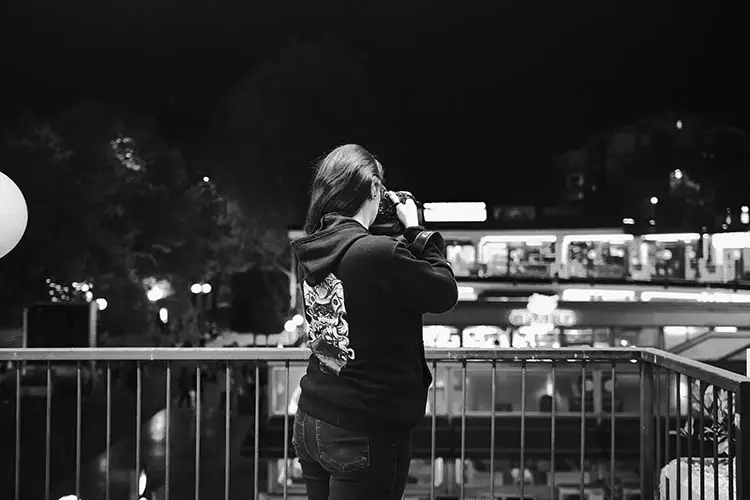
If you are looking to get a 28mm lens for around $400, you will find an f/2.8 variant from most manufacturers. Apertures wider than that can cost significantly more if you aren’t willing to go for a third-party manufacturer. For example, the Nikkor 28mm f/1.4 costs $1000 more than a Sigma 28mm f/1.4 Art.
Excellent for street photography
A 28mm lens is probably the sweet spot for street photography. Not too wide, not too telephoto. It provides just enough depth of field to separate your subject from the background, if you are brave enough to get up close. On the other hand it will be quite wide if you want to shoot from a distance and get more context in your shot.
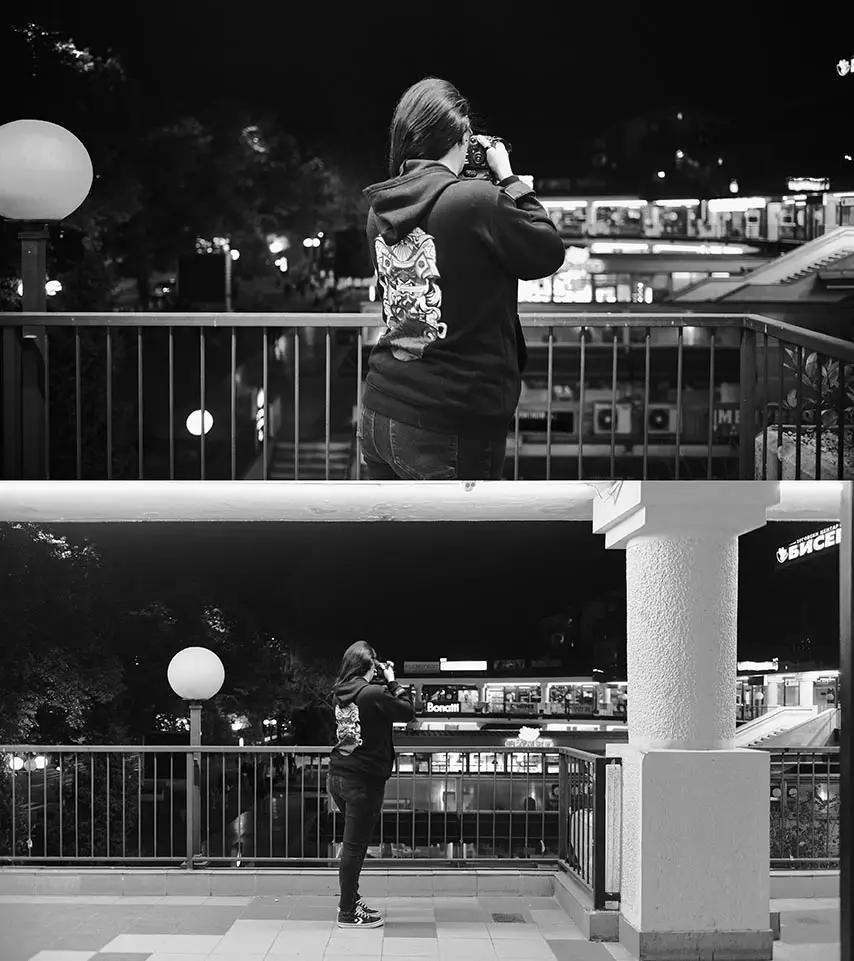
Pair this lens with a crop sensor, and you are getting the equivalent of a 40mm lens. 42mm to be exact, or 45mm if you are shooting Canon. In this case, you will be working with a bit of a tighter perspective.
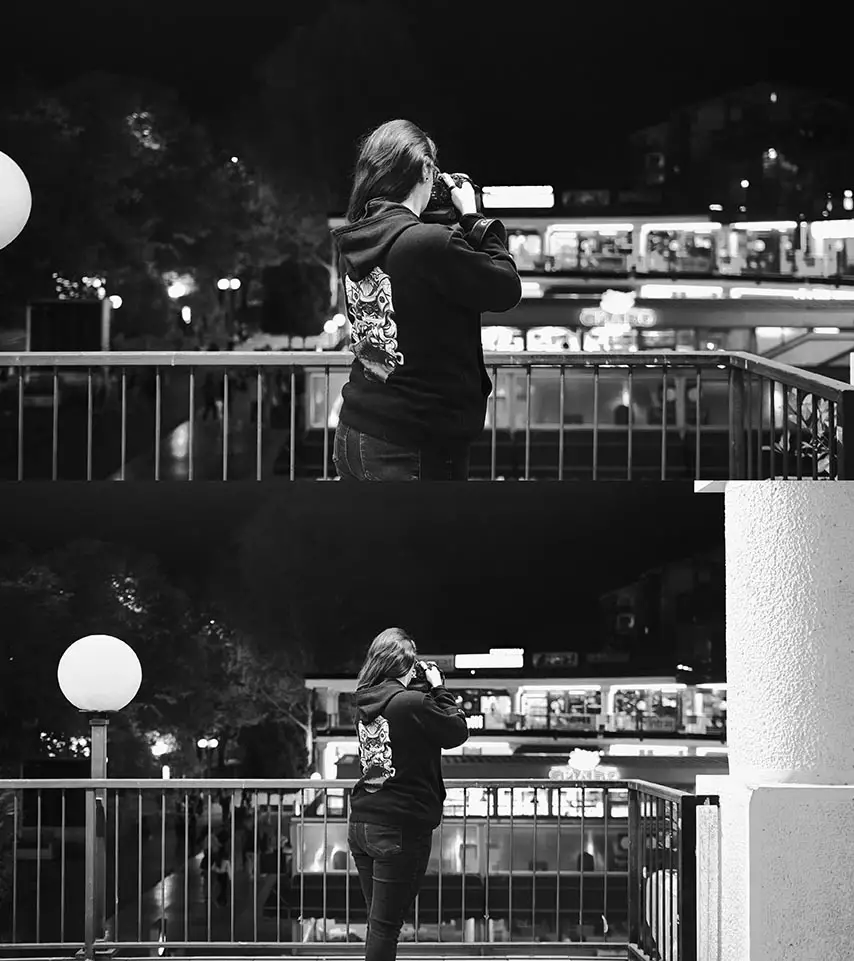
As you can see, even on a crop sensor, the 28mm lens is quite usable for street photography. You just will need to take a step back if you want to keep the same frame with the full-frame. More accurately, three steps back.
It is great for landscapes, too
Being on the wider end, the 28mm lens proves to be a great landscape option if you are shooting on a full-frame camera. It is not ultrawide, but it is still wide enough to capture most of the vista in front of you. The advantage of not being ultrawide is providing a photo with less distortion.
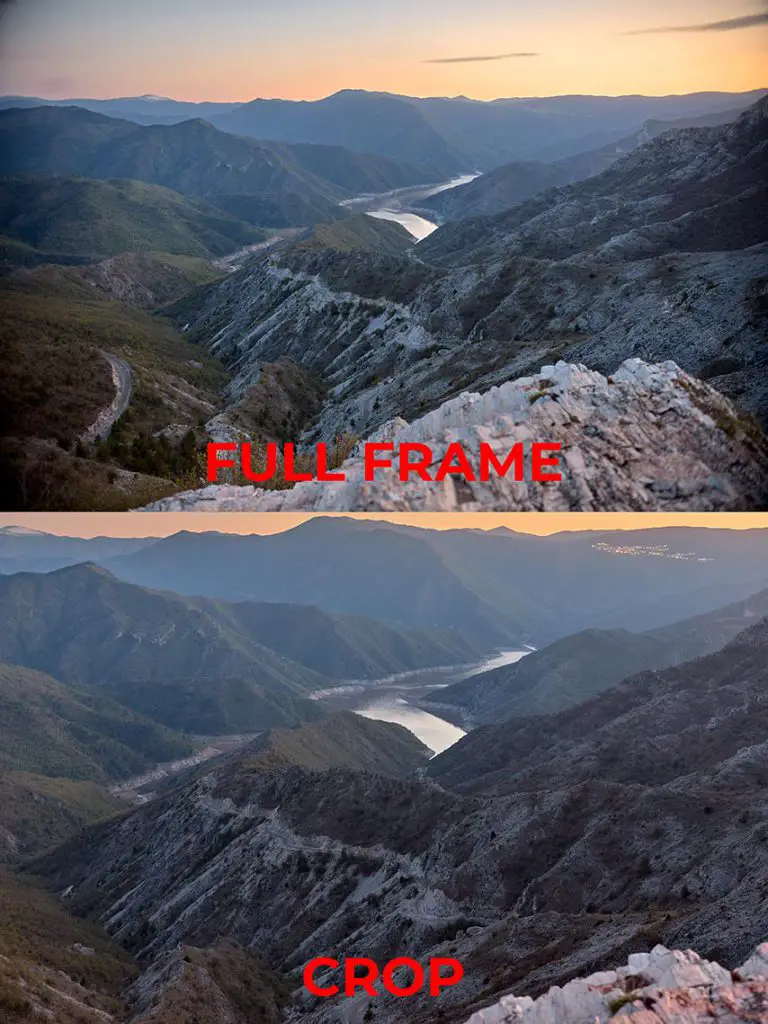
On a crop sensor, it might be a bit tough to get everything in the frame. This means that you will have to be a bit creative with the framing.
What is a 35mm lens good for?
Being slightly tighter than a 28mm lens, the 35mm lens will be better geared towards shooting photos of people. Even though portrait lenses usually are longer in focal length, the 35mm lens is considered to be the starting point.
Low light scenarios
Just like the 28mm, the 35mm lens is great in low light. While having a variety of lenses available with wide apertures at decent price points, the 35mm lens is a great choice if you are shooting hand held in low light scenarios.
A 35mm f/1.8 or f/2 will cost roughly the same as 28mm f/2.8 if you go for an original manufacturer’s lens. You get an extra stop of light for the same (or similar) price if you go for a 35mm lens, which is a big bonus.
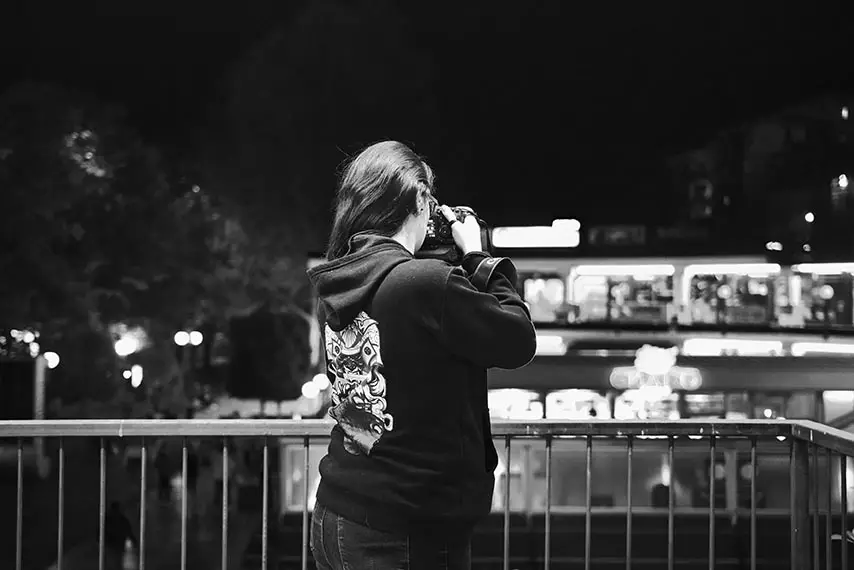
If you use the reciprocal rule, you will be using a shutter speed of 1/60 and 1/100 for full-frame and crop sensor cameras, respectively.
Great for portraits
As previously mentioned, the 35mm is considered to be the widest portrait lens. Being on the wide end for portraits, gives you the ability to include a lot of the background in the photo. This works great for environmental and contextual portraits.
If you stop down the lens slightly, the background is blurry enough to separate the subject from it. But it is recognizable enough to provide context.
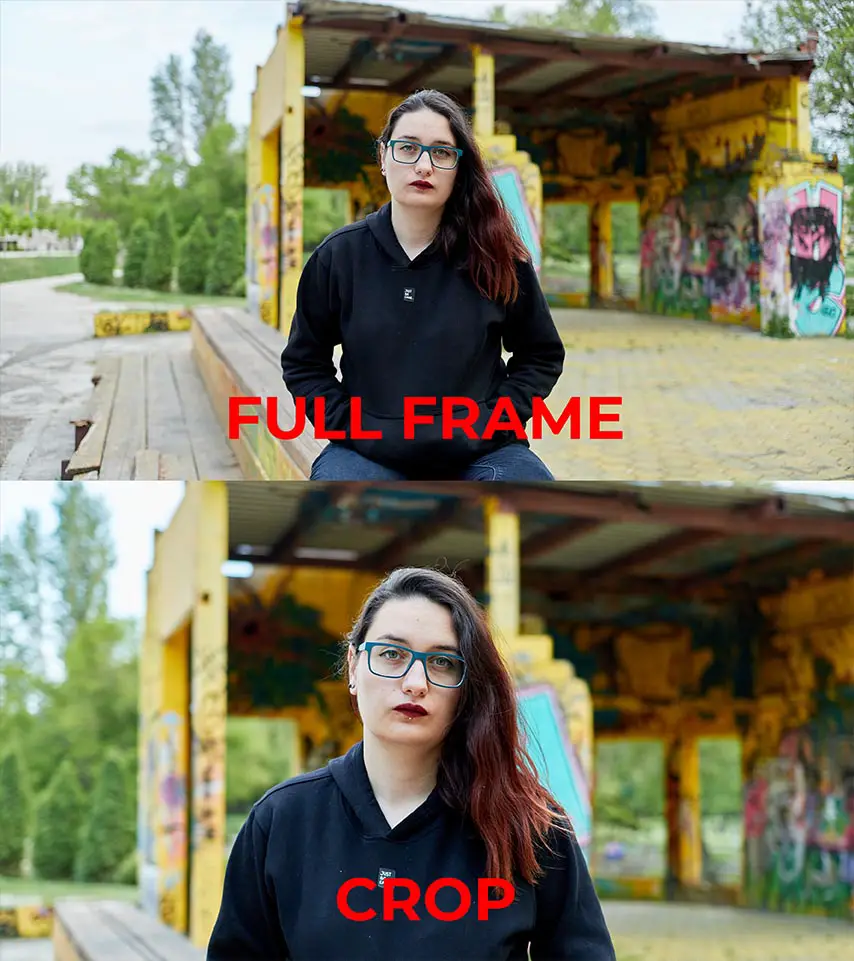
On a crop sensor, the 35mm lens behaves closer to a 50mm (if you shoot Canon as I do). But even then, to match the frame of the full-frame camera, you will have to take around two steps back.
It works great as a street photography lens
When it comes to street photography, the 35mm lens is also a great choice. Not as wide as the 28mm, but for a bit more of a close-up style, it works great. You will get slightly more subject separation and a bit more compressed background, which can work well in busy areas.
It will give you a bit more space between you and your subject, which can help you if you want candid shots.
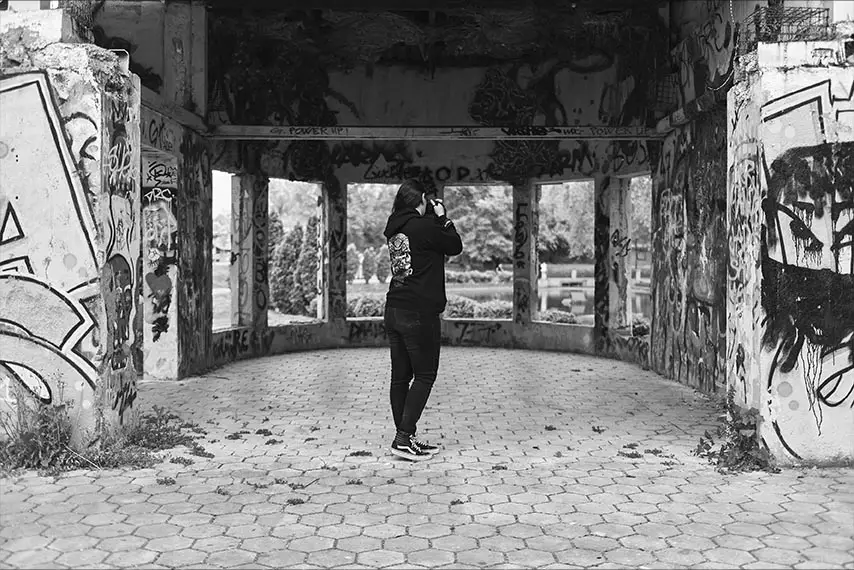
On a crop sensor camera, it behaves closer to a 50mm lens. If Henri Cartier-Bresson could make a career using nothing but a 50mm, so can you.
35mm vs 28mm for Street Photography
Comparing these two lenses for street photography will essentially boil down to your preference. However, the decision will be easier if you can observe the differences. That way, you will know which lens you prefer.
In a scenario where you are shooting from further back (capturing a whole-body), the difference between the two lenses is hardly noticeable. Your distance to the subject will differ by a step or two.
The 35mm lens has a bit more background compression (it brings the background closer), but not a lot. In most cases, you’ll be able to capture the same scene with both lenses.
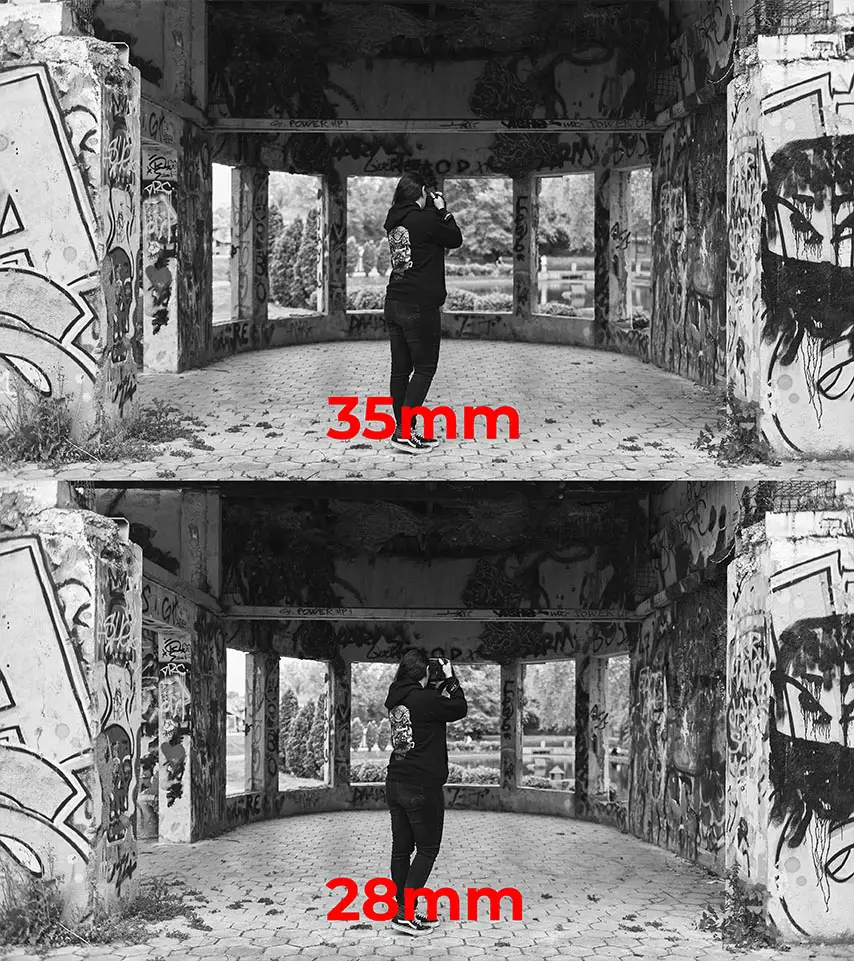
The same applies if you use a crop sensor camera. The differences are equally minute. However, since you are working with a crop sensor, you will have to shoot the scene from further away.
On a crop camera, you will have to essentially double your distance to the subject compared to shooting the same composition with a full-frame camera.
So, if your distance to the subject with a full-frame camera is, say, 5 steps, to keep the same composition on a crop camera, you will have to be around 10 steps away from your subject regardless of the lens. Of course, this is not exact, just to give you a rough estimate.
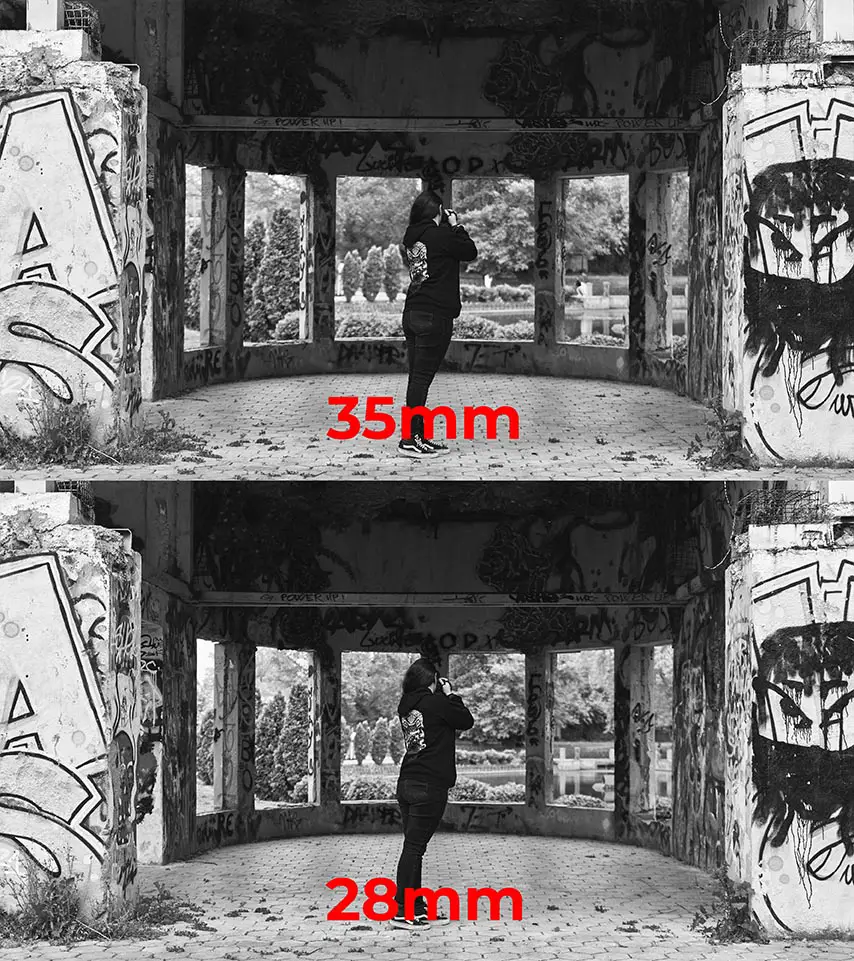
As you can see, the differences between the two focal lengths are minute, even on a crop camera.
If you were to shoot a tighter composition, then the differences would be a bit more noticeable. However, even then, you can probably do the same with both lenses. The 28mm lens would give you a bit more flexibility.
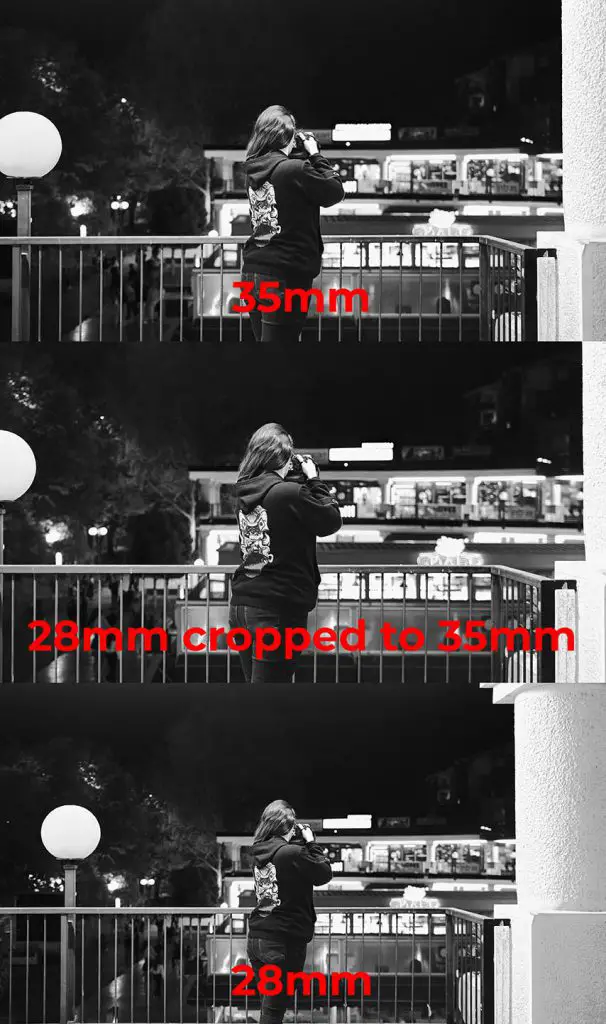
If you were to shoot at 28mm and crop the photo to match the composition made with the 35mm lens, the differences between the cropped 28mm and the original 35mm shot would be hard to notice.
On a blind test, you and I both would probably struggle to tell which photo is which. The same principle applies to crop sensor cameras.
All in all, I’d give the win to the 28mm lens when it comes to street photography. It provides more flexibility than the 35mm one, without any sacrifices.
28mm vs 35mm in Portrait Photography
When shooting portraits, the distance to the subject matters a bit more than in street photography.
Here, distance to subject, especially for tighter framing, determines the exaggeration of the facial features.
The 28mm lens will exaggerate the facial features a tad more than the 35mm lens. Even though the differences are small in this case as well, they matter more here. Even the background blur doesn’t differ too much.
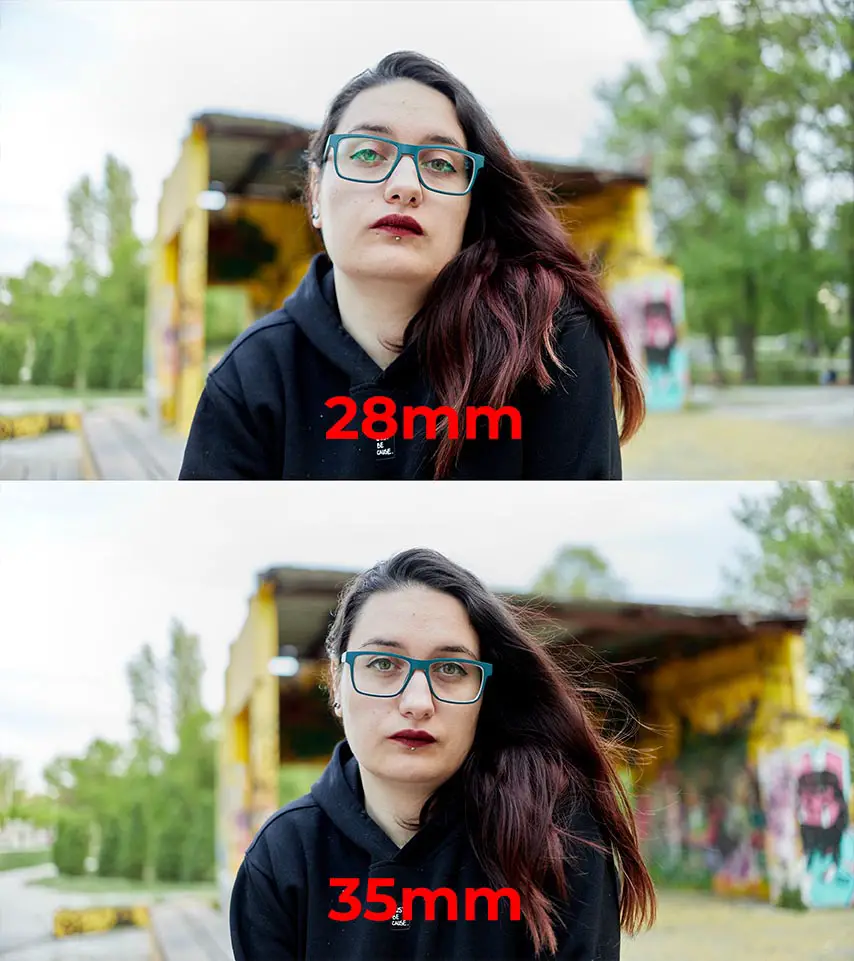
On a crop sensor camera, due to the distance to the subject, the exaggeration is even less noticeable. That means if you are using a crop sensor camera, the difference between these two lenses is less pronounced.
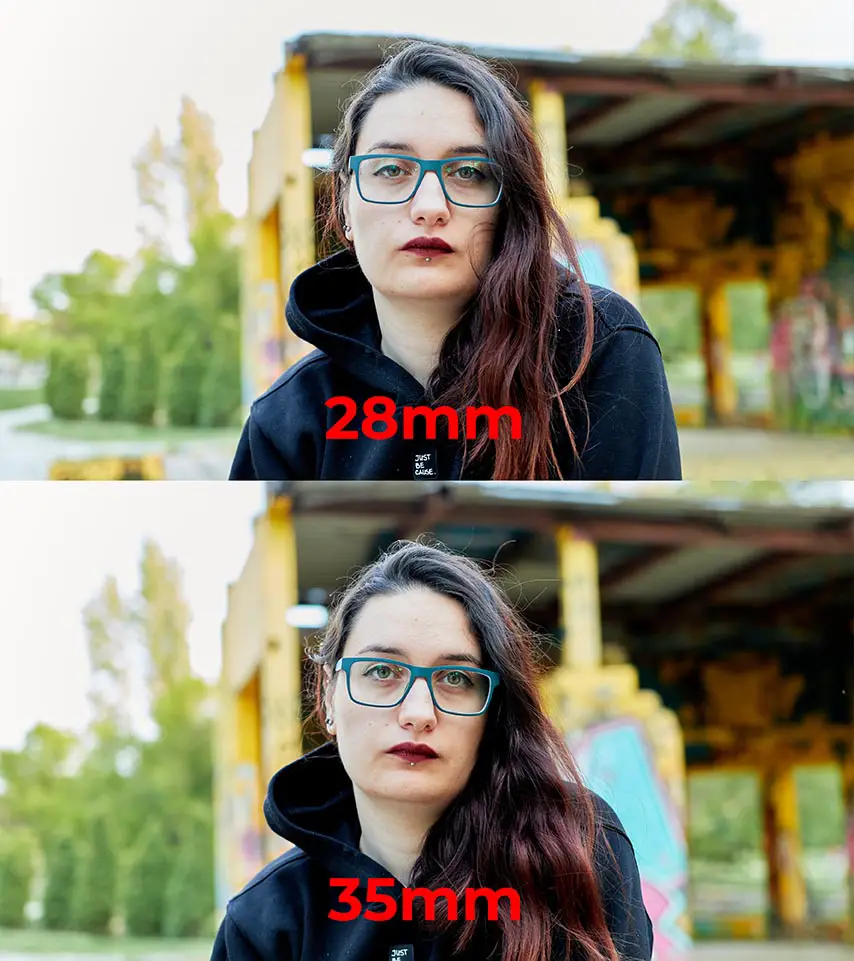
The difference between these two lenses becomes more obvious when the distance to the subject remains the same.
In this case, you will notice that the subject appears better separated from the background when using the 35mm lens. That is due to the background compression.
Even though the 28mm lens captures more, being wider, it blurs the background less. That makes it harder for the subject to stand out from a busy background.
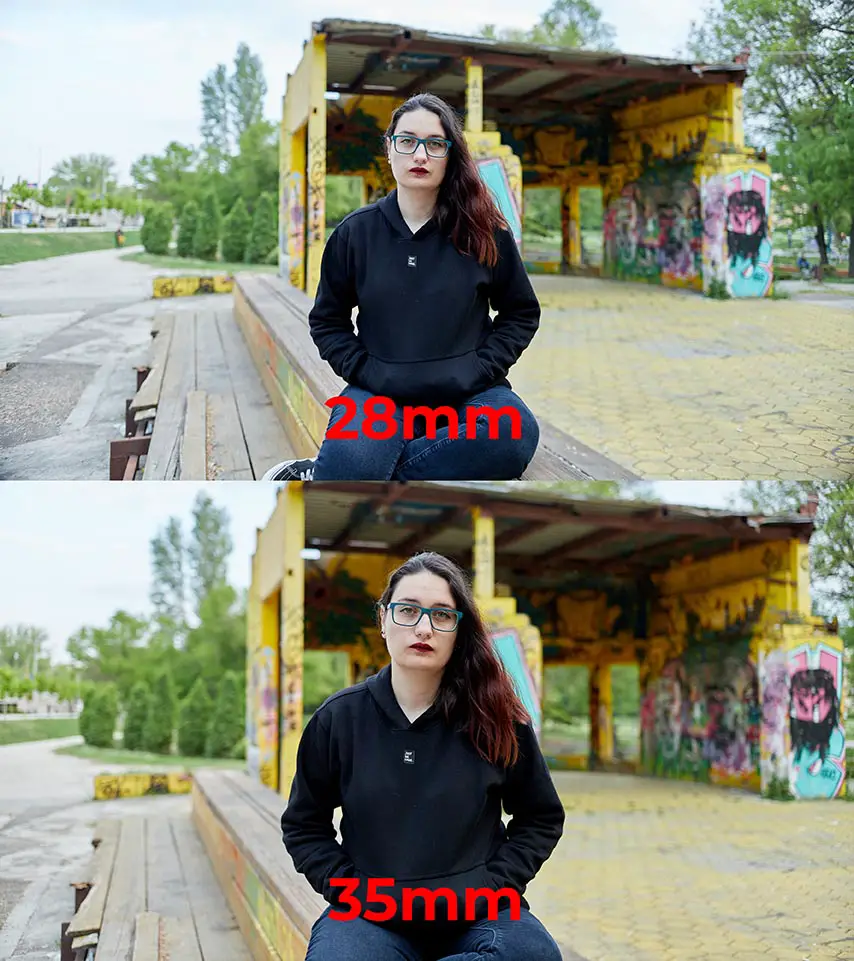
The story does not get much different with a crop sensor camera. The only difference is that the composition is tighter. Other than that, the differences remain the same. The 35mm lens separates the subject better than the 28mm lens does.
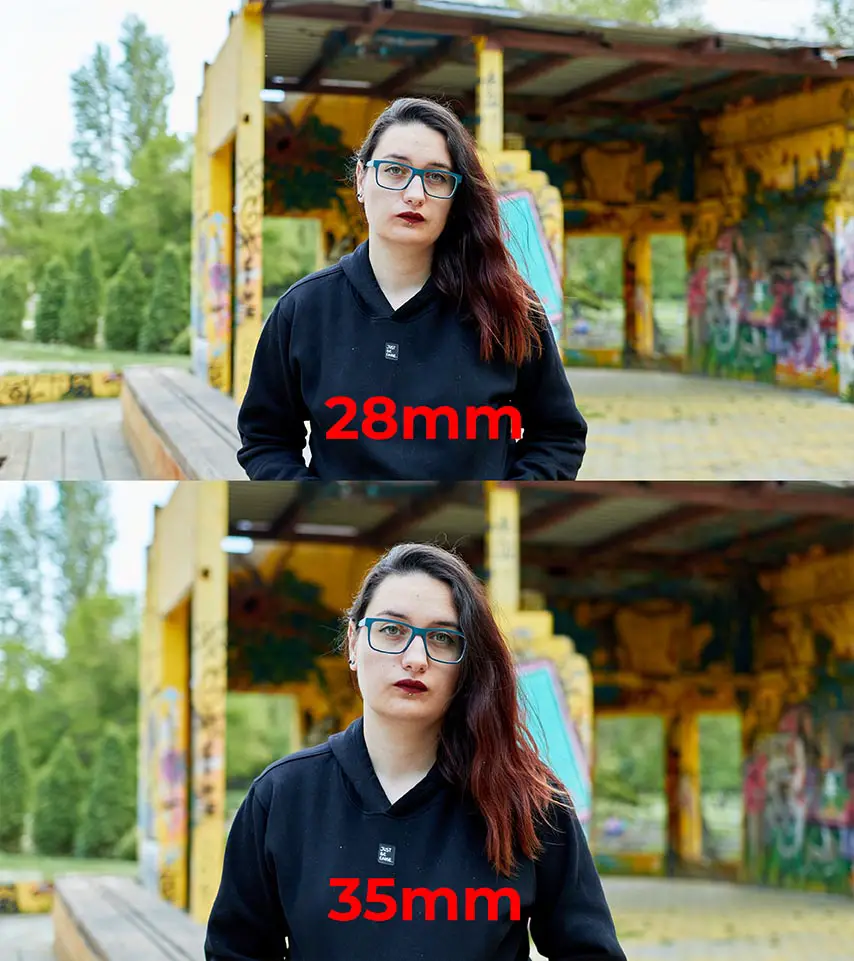
In summary, I would say that for portrait work, the 35mm lens is the more effective of the two. It separates the subject from the background better, and it is slightly better at avoiding facial features exaggeration.
How About Landscapes?
When it comes to landscape work, the difference between the 28mm lens and the 35mm lens is the field of view.
The 28mm lens is wider, thus capturing more.
The 35mm lens will look slightly cropped in when compared to the 28mm lens. However, unless there are very visible foreground and background elements, the zoom compression between the two lenses won’t be noticeable.
In other words, if you are creative enough, you can use both lenses for the same purpose. The 28mm lens offers more flexibility at the sacrifice of the resolution, should you need to crop.
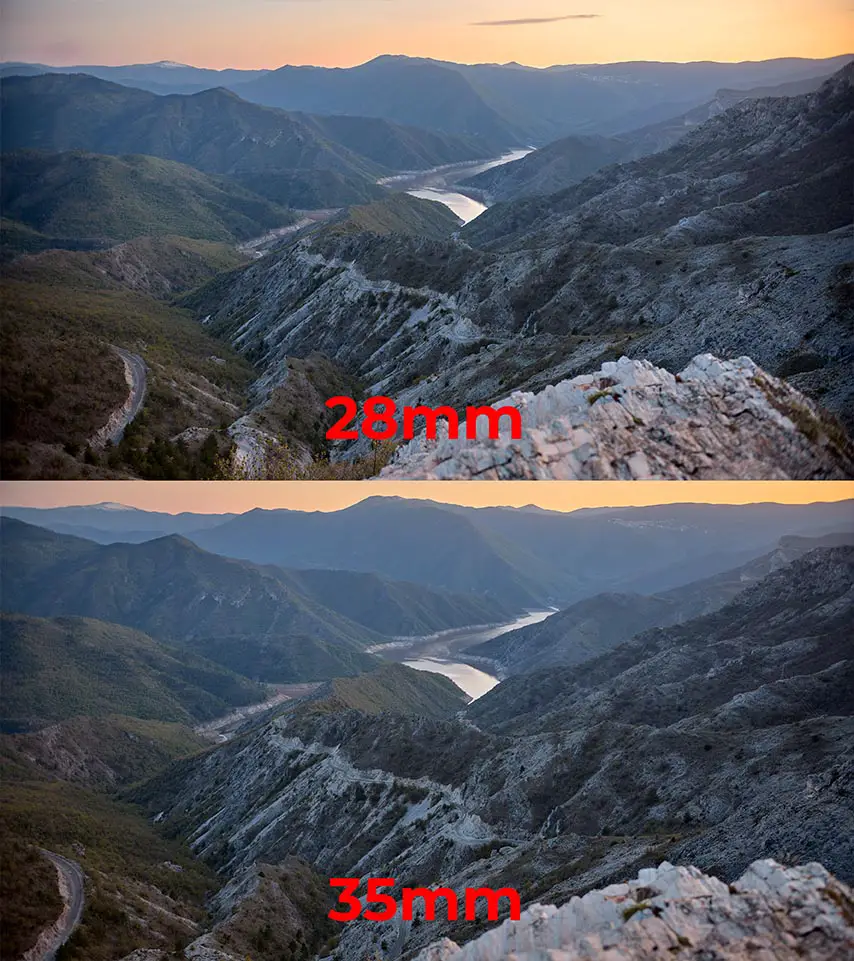
Shooting on a crop camera makes landscape photography with these lenses trickier. Since the focal length gets multiplied, the composition gets limited to a bit more detail-oriented landscapes.
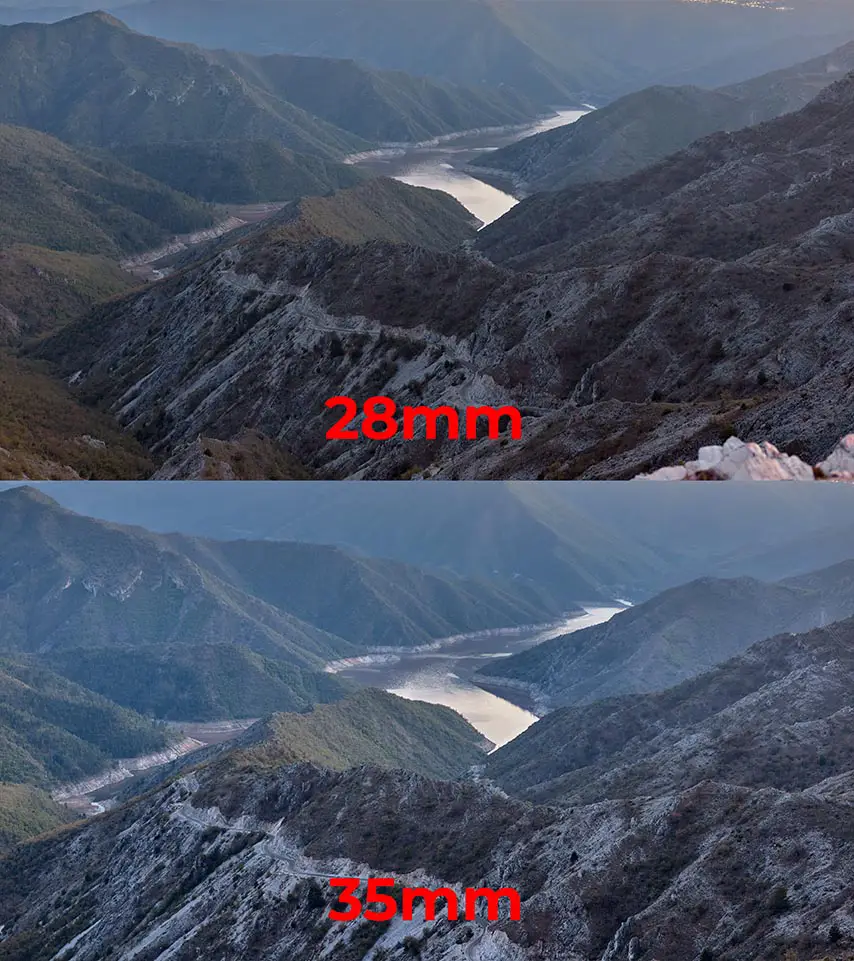
In this case, in my opinion, the 28mm lens is the better choice if you are shooting landscapes with a full-frame camera.
If you are using a crop sensor, I would say the 35mm lens is a better choice. Because it is a bit more telephoto, it makes tighter landscape composition easier.
35mm vs 28mm Overall Comparison
In summary, the answer to whether a 35mm or a 28mm lens is better boils down to: it depends!
It depends on what you shoot,what your style is and the sensor size in your camera. Both focal lengths are quite close to each other, which makes comparisons difficult, reducing the comparisons to pixel peeping.
In my opinion, if you shoot portraits, the 35mm lens is the better choice, while the 28mm lens is a better choice for street photography.
For landscapes, depending on your sensor size, the lenses perform differently. A 28mm lens will be a better choice for you if you are shooting a full-frame camera, while a 35mm lens would be a better-suited lens for a crop sensor camera.
Read More:
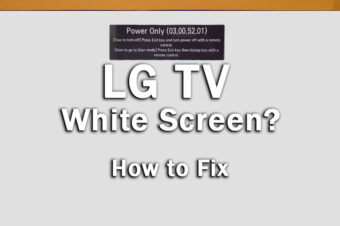

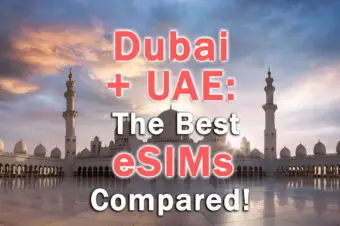
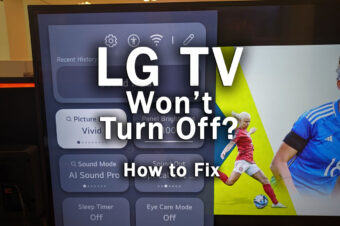
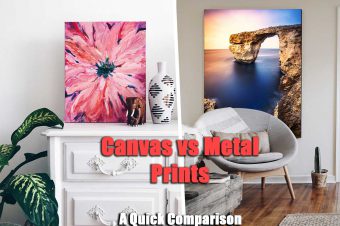

Leave a Reply